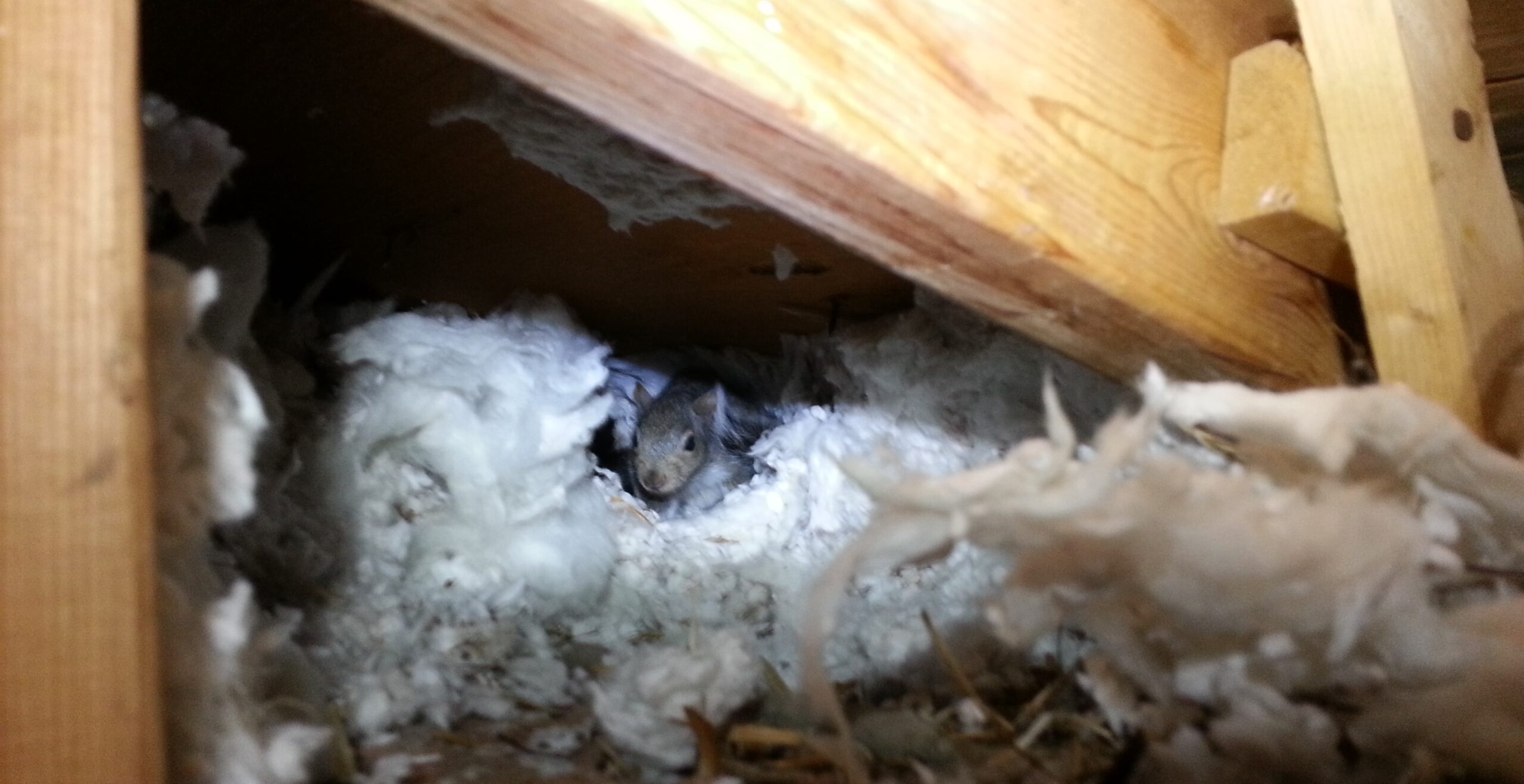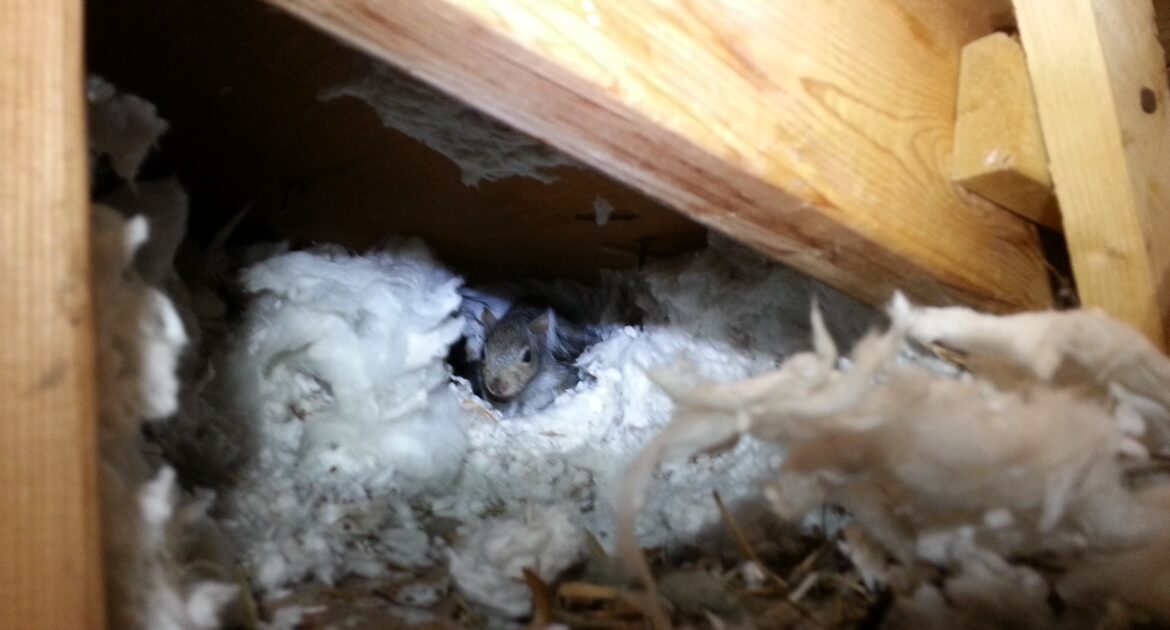When it comes to quiet but costly intrusions, squirrels are at the top of the list for homeowners in Coquitlam. These agile animals might seem harmless as they scamper across fences or leap between trees, but when they find their way into your attic, it’s a completely different story. They’re experts at making themselves comfortable by using your attic as a sanctuary—but this comfort comes at the significant expense of your property’s insulation and structural integrity.
One of the first questions a homeowner might have is, “How can squirrels damage my insulation?” The answer lies in their habits. These creatures tear, gnaw, soil, and trample their way through insulation, reducing its effectiveness and leaving you with higher energy bills, potential safety hazards, and costly repairs. Understanding the risks they pose is essential to taking timely action. And if you’re wondering how to get rid of squirrels effectively, professional services like squirrel removal in Coquitlam are the key to safeguarding your investment.
This guide walks through seven ways squirrels can harm your attic and the insulation inside. We’ll cover everything from the damage they do to the risks they bring and the humane steps you can take to solve the problem.
1. Nesting Instincts Tear Insulation to Shreds
Squirrels are natural architects when it comes to building nests, and for them, your attic’s insulation is the ideal construction material. They’ll rip and shred the fibrous material to create a soft and secure space for shelter and raising their young. While insulation might seem abundant to us, every handful they remove creates gaps that reduce its thermal performance.
With these gaps, regulating indoor temperatures becomes a bigger challenge. Your heating and cooling systems need to work harder, resulting in higher energy bills. Over time, shredded insulation won’t just cost you money—it’ll throw off your comfort levels, too, especially during extreme weather.
2. Contaminating the Space with Waste
Once squirrels have made themselves at home in an attic, waste buildup becomes a serious issue. Urine and droppings aren’t just gross—they contain harmful bacteria and parasites that could pose risks to the health of your household. The insulation absorbs this waste, becoming soiled and needing complete replacement in most cases.
Even if the material itself has good coverage in other spots, the contamination creates bad odours that are hard to ignore and even harder to remove. Over time, air quality can decline, putting your family at risk of breathing in harmful particles.
Addressing waste-related damage often means removing sections of the soiled material, thoroughly sanitizing the area, and replacing the insulation. If left untouched, the damage goes far beyond the surface level.
3. Chewing Through to Make Entry
One of the less obvious but incredibly impactful behaviours of squirrels is their tendency to chew. Their sharp teeth grow continuously, which means they’re always gnawing to wear them down. This behaviour leads them to chew right through the insulation to access tighter spaces or widen existing gaps.
By creating openings, these animals make your property even more vulnerable—not just to themselves but to other pests as well. Over time, exposed wood, electrical wires, or even drywall can face further decline, setting the stage for more expensive repairs.
4. Flattening Insulation from Constant Movement
While squirrels don’t mean to damage insulation, their constant movement and tunnelling through it can cause wear over time. Similar to flattening a fluffy pillow, this activity removes the air pockets that make insulation work properly.
When insulation gets compacted, it can’t regulate your home’s temperature as well. This can lead to uneven heating or cooling between rooms and higher energy bills. If you’ve noticed these issues, squirrels in your attic might be part of the problem.
5. Attracting Other Wildlife
When squirrels move into your attic, they often attract other animals. The noises, food scraps, and droppings they leave behind can act like an open invitation to other pests. Rodents like rats and mice may follow the trail of food, looking for the same warm and sheltered space. Bats could also be drawn to the attic, squeezing into small gaps made or enlarged by the squirrels. Insects such as flies, mites, and cockroaches might appear as well, attracted to the waste and droppings squirrels leave behind.
Once these secondary pests join in, the problem can quickly get worse. Their activity leads to more contamination, with waste piling up and materials like insulation, wood, or drywall suffering even greater damage. Having multiple types of pests increases the harm to your home and raises the health risks for your family. Each pest brings its own challenges—rodents can chew wires, bats may leave guano, and insects can spread bacteria—all of which make the situation more complex and expensive to fix.
6. Gnawing Wires Creates Safety Hazards
Perhaps the most dangerous behaviour squirrels display is their tendency to chew on electrical wiring. Many attics have wiring hidden inside or near insulation, making it an easy target. Once insulation is pulled or chewed away, exposed wires become an even greater fire hazard.
According to research, a significant percentage of house fires have been linked to wiring damage caused by animals. Taking action when you notice frayed wires or signs of chewing is vital to ensuring your family’s safety. Skipping that step risks turning a nuisance into a life-threatening emergency.
7. Long-Term Destruction of Structures
Squirrels don’t just damage insulation—they can also harm key parts of your attic’s structure. Their constant gnawing and nesting habits can weaken support beams, drywall, and other important materials. Over time, this destruction can compromise the building’s framework, leading to expensive repairs.
The longer squirrels stay, the worse the damage gets. What might start as a small problem can quickly grow into major structural issues that take a lot of time and money to fix.
Quick Takeaway: Key Forms of Damage
- Shredding insulation for nest-building.
- Contamination with waste and harmful bacteria.
- Chewing through materials, exposing vulnerabilities.
- Compacting insulation due to movement patterns.
- Attracting pests, increasing the likelihood of infestations.
- Wiring damage, creating fire risks.
- Structural weakening, leading to larger, costly repairs.
A Humane Path to Prevention
Squirrel activity might cause extensive harm, but the good news is that prevention and restoration methods can protect your property. Our team at Skedaddle Humane Wildlife Control specializes in removing these invaders without trapping or relocating them.
We use one-way doors, which allow animals to exit the structure but prevent them from re-entering. Once the attic is clear, we’ll take steps to repair openings and protect key areas with durable materials to keep them from returning.
Not only that, but we handle cleanup and sanitation to ensure contaminated insulation isn’t left behind. This holistic approach lets you reclaim your space and keep it safe for the future.
Don’t Leave Damage Untouched
Do you have squirrel damage to your house? The chaos squirrels cause may start out small, but the consequences can snowball quickly. Gaps in your insulation, climbing energy bills, and hidden hazards like wiring damage are all reasons to take action sooner rather than later.
By dealing with squirrels promptly, you can avoid unnecessary repair costs and safeguard your home’s safety and efficiency for years to come. If you’re considering squirrel removal in Coquitlam, trust Skedaddle Humane Wildlife Control to finish the job right.
Don’t wait for more damage—protecting your investment starts with expert help. Contact us today and keep your attic off-limits to unwanted visitors.




